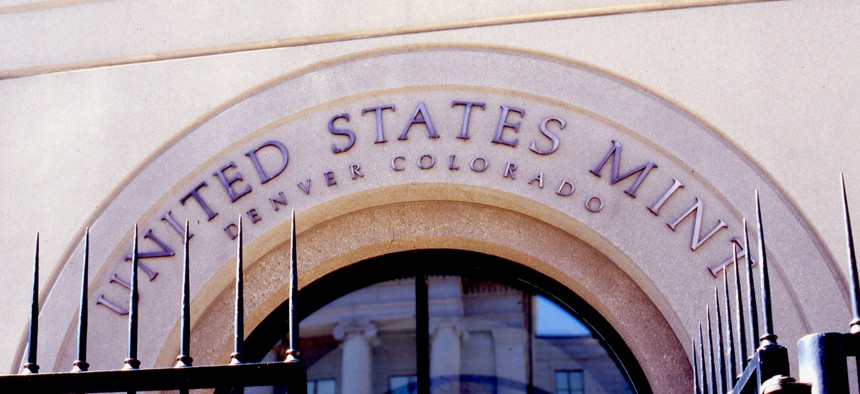
Shutterstock.com
How the U.S. Mint Used the Shift to Remote Work to Reshape Its IT Mission
The pandemic upended operations, but that wasn’t entirely bad, says Chief Information Officer and acting Deputy Director Francis O’Hearn.
Francis O’Hearn arrived at the U.S. Mint in March 2020, just as most of the agency’s employees began maximum telework due to the coronavirus pandemic. “COVID upended reality in ways we’ve never seen before. But within this new paradigm, opportunities presented themselves,” said O’Hearn, the chief information officer and recently named acting deputy director of the U.S. Mint.
What he envisioned for the Information Technology Directorate was a new way of thinking and working within ITD to support the Mint’s overall mission, and he set out to establish the path forward to achieve it.
While his executive staff refocused on the tactical requirements of shifting to a geographically dispersed and remote workforce, O’Hearn evaluated the organization from a strategic perspective, he said: “COVID gave me the advantage of time.”
One of the first things O’Hearn did was update ITD’s vision and strategic priorities. He added innovation to the list of goals to provide products and services that would enable the Mint to create new markets for its customers and improve organizational profitability. In other words, O’Hearn wanted ITD to find ways to eventually positively impact Mint’s revenue.
Within ITD, O’Hearn is responsible for a nearly $60 million budget, 60 government employees and approximately twice as many contractors. It is a relatively small organization compared to his previous experience in the early 2000s as the Director of Finance and International Export Operations at the Ford Motor Company, where he managed two portfolios, each of which was valued at nearly $2 billion.
This experience, combined with other private and public sector experience, provided O’Hearn the knowledge to reimagine ITD through the discipline known as Technology Business Management, which allows businesses to integrate IT into the organization. According to the TBM Council, TBM “provides data-driven decision-making to manage, plan, and optimize costs, value, and quality of all technology investments.”
“Mint is quite unique in that it is really a retail organization. There's a lot of manufacturing involved, logistics, sales and marketing.” O’Hearn said ITD’s role in that broader context is to help the Mint operate less like a standard government IT organization and more like a business.
When ITD makes major technology decisions, O’Hearn said it needs to understand how those decisions impact the return on investment and how they affect the entire Mint and not just IT.
“In the not too distant future, as we shift to being a more innovative IT organization, we can figure out how to help the Mint improve sales, improve their profit margins, and some of the other things that typical businesses do.”
Transforming the mission and framework to accomplish it is one thing. Mobilizing the leadership around it is something altogether different.
“Most organizations are a little nervous to have new leadership come in. I think this organization, in particular, was no different,” O’Hearn said.
One of the reasons was the amount of change ITD had experienced in a short period of time. “They had just done an organizational realignment about three months before,” O’Hearn said, “but it didn’t mean the organization had actually changed the way they operate.”
O’Hearn acknowledged the need to build trust between him and his senior leadership team.
First, he aligned roles and responsibilities with strategic objectives and detailed his expectations. “Leadership wasn't really given the opportunity to lead before. They executed. But I expect my GS-15 leadership team to be more independent and to work together more as a group.”
Then, he identified areas of improvement, but also provided support through training sessions to strengthen managerial skills sets.
In addition, he reframed senior managers’ concept of success. “In the federal government, we're so used to being bureaucratic we want to follow processes just to follow processes, without understanding if they were effective or achieved stated goals.”
For instance, within ITD’s governance process, O’Hearn reduced redundancy by consolidating several different boards and provided each with a specific focus.
The Mint’s new Change Advisory Board, aggregated from three separate boards, now provides a systematic approach to control the lifecycle of all changes, minimizes disruption to IT services and eliminates review redundancy.
O’Hearn also leveraged the external talent pool and in the space of a month, added four new senior-level staff members. He hired a new deputy CIO, chief information security officer, application development chief, and the end user division chief. “Bringing on people who have the necessary skills sets to help create the new vision for the agency is just going to further energize that culture change,” O’Hearn said.
The results of these efforts are starting to pay dividends. ITD is producing a multi-year strategic plan and embracing agile practices to complement its focus on TBM’s data-driven decision-making. O’Hearn said what he has put in place so far are just the first steps in a longer process to drive innovation. “We still have a long way to go, but I think it's going to prove worthy.”
Kelly Stuck is a senior consultant and technology adoption subject matter expert at Wheelhouse Group. This article is part of a series in which Wheelhouse Group consultants interview their federal clients who provide insight into how they lead their teams through the pandemic.






